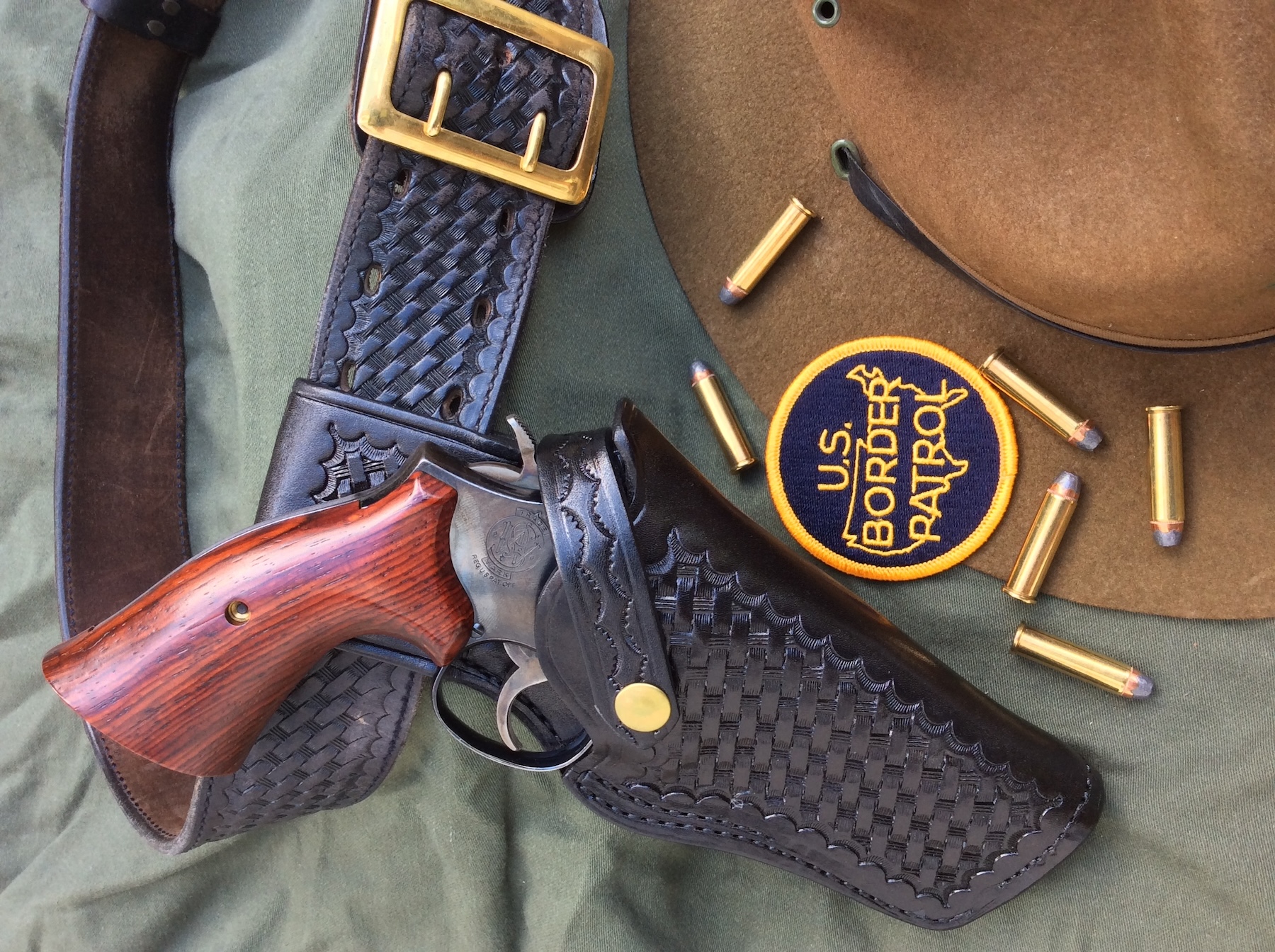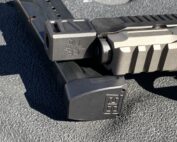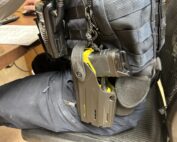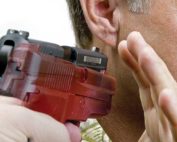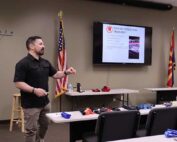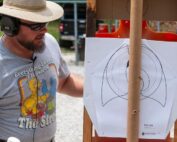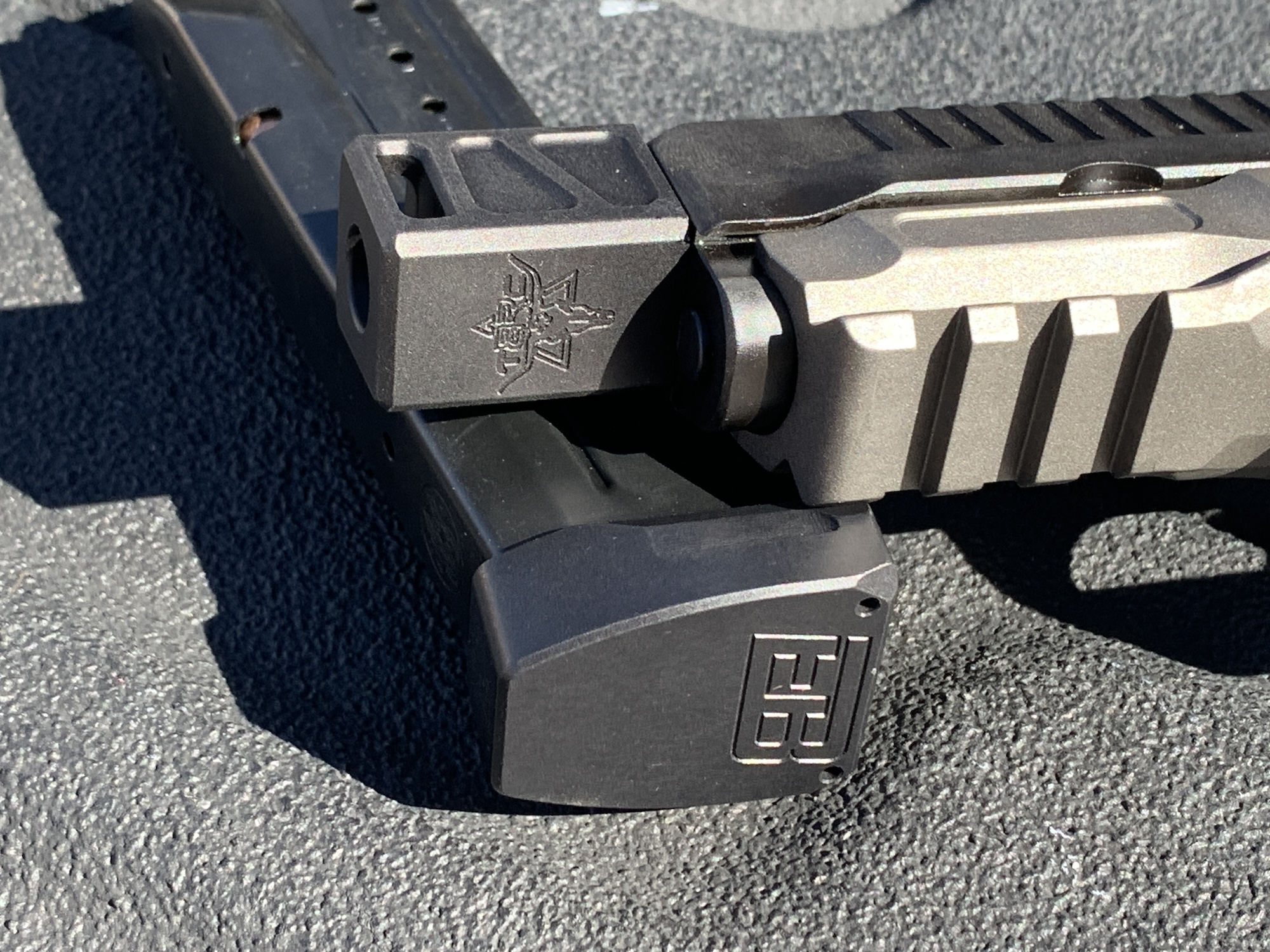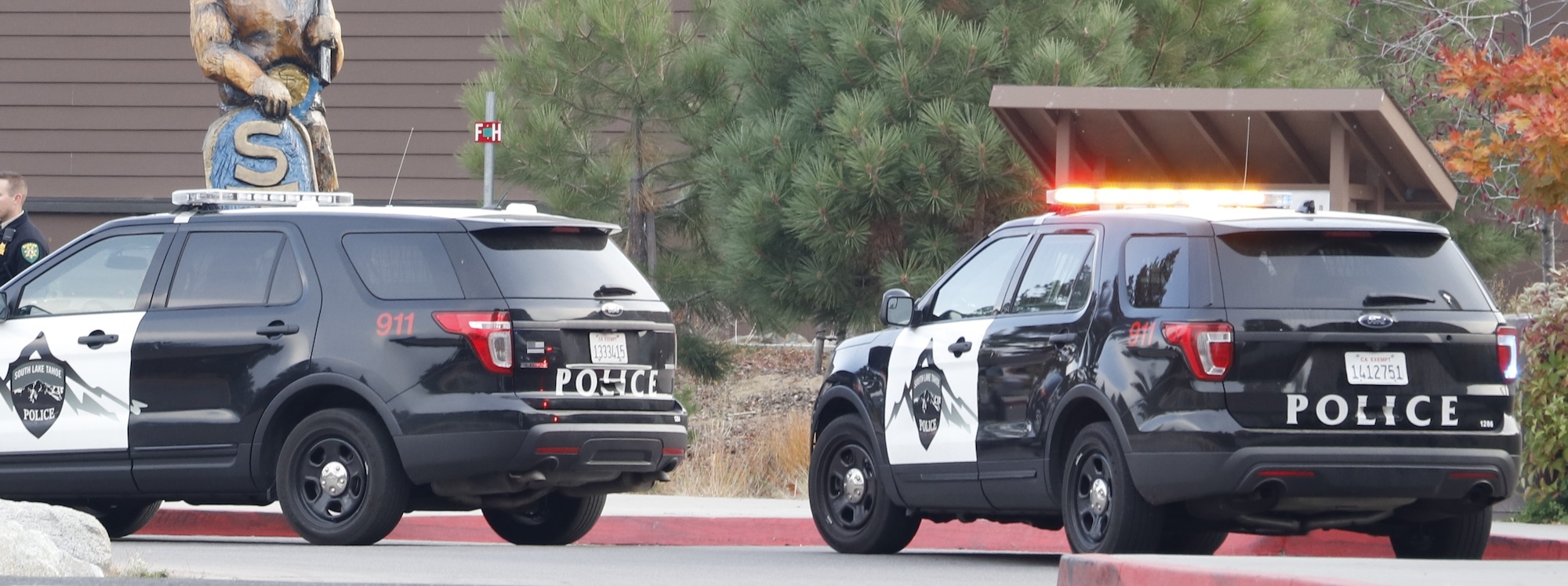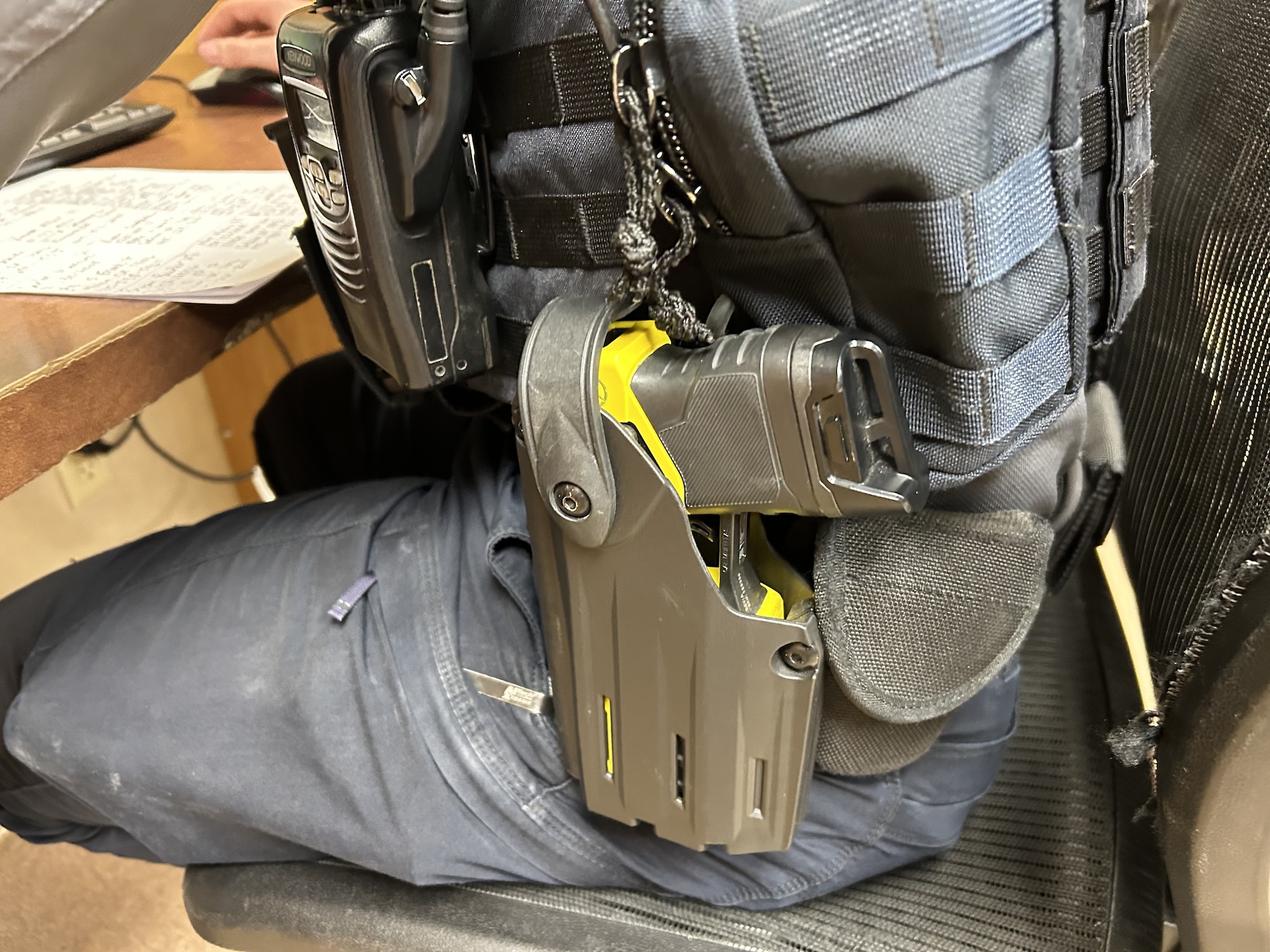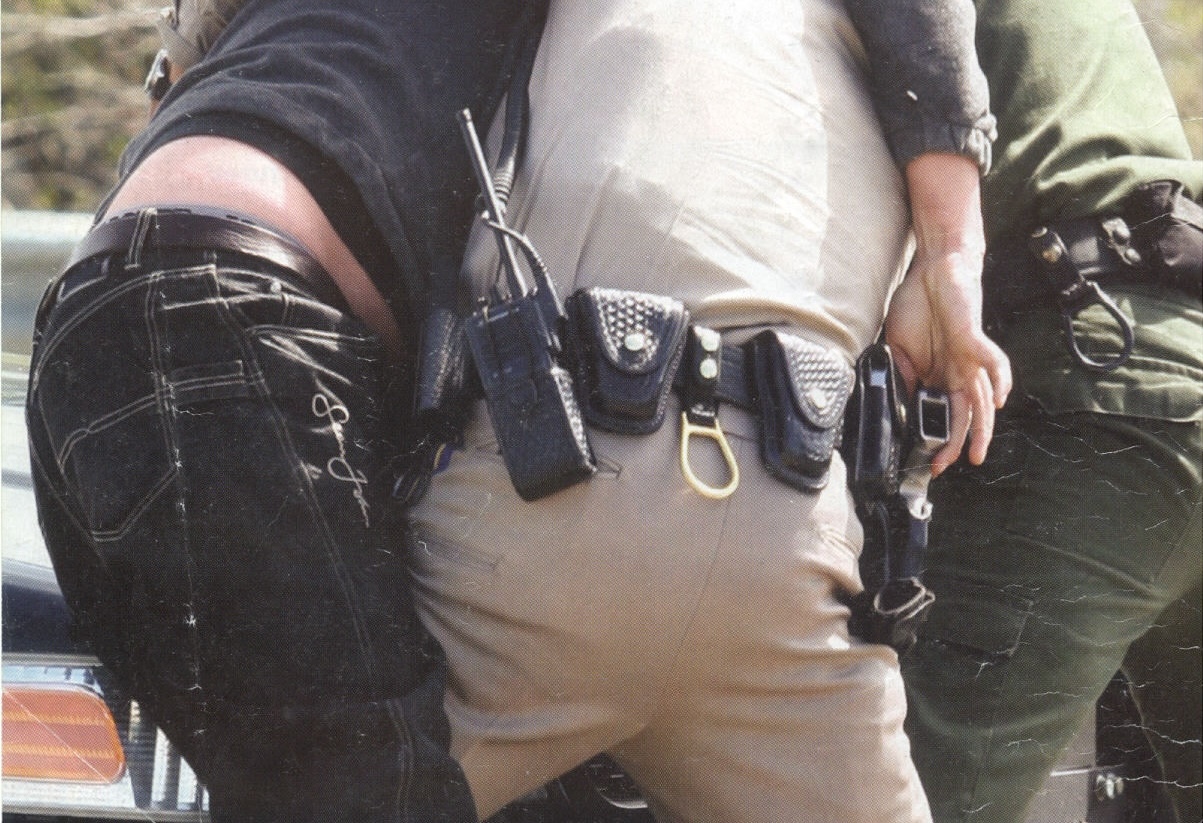
feature-1chplarryolvedadisarm1
Safariland retained the retention levels when they purchased the Rogers Holster Company and its designs in 1985. Actually, Safariland didn’t just keep the protocol; they expanded it, adding new criteria and new test requirements, which made it even more difficult to achieve a Level I or higher rating.
Growth
One of the significant changes made by Safariland was to more carefully define and script the pull testing that a duty-rated holster system (including belt, attachment, and holster) had to endure. In the early days of Rogers’ system, the simulated attacks were more free-form. In the current Safariland protocol, the process is more carefully defined and scripted to ensure thoroughness, consistency, and repeatability. With today’s level testing, the holstered firearm must be attacked in six different directions, including from the front, from the rear, from the top, from the bottom, in an outboard pull, and in a rotating fashion that attempts to twist and break the holster’s attachment. A duty-rated retention holster system must successfully pass all six of these subtests at each retention level to earn the rating for that retention level.
Beyond the level test changes, Safariland also changed its duty-rated testing protocol by adding another pull test using a hydraulic machine. In this test, a holstered gun is attached to a duty belt, and the machine tries to pull it off the belt using hundreds of pounds of force. If the holster or its attachment fails, then the holster will not be rated for duty use.
Safariland has a hydraulic pull machine for testing their holsters. While developing the Vault line of duty holsters, the machine developed enough force to deform or break some pistol frames. However, none of the holsters broke or released the pistols.
Enhancements like these help guarantee the holster and attachments will withstand the kinds of forces encountered in an attempted disarming.
Chaos
Because Safariland is such a powerful player in the law enforcement duty holster market, its competitors were forced to respond to the Rogers-Safariland retention level system by assigning retention levels to their own products. Unfortunately, many of these companies used different criteria for their levels.
For example, some companies assigned retention levels without conducting any actual pull tests—either human or mechanical. They assigned retention levels based on an assessment of the holster’s features. Others conducted pull tests that had different criteria to judge a Pass or Fail.
Some companies assigned retention levels based on the number of locking features present on the holster, regardless of how many steps it took the officer to disable them. So, a holster with three different locking features, which were all simultaneously unlocked with a single button push, might be rated as a “Level III” holster by one company when it could only withstand a single, five-second, Rogers-style attack.
Some companies took to assigning retention levels to concealment-style holsters (in contrast to Rogers’ intent that the system would only be applied to duty holsters) and took the position that a holster’s natural friction was a “retention feature.” Thus, an open-top scabbard, with no straps, snaps, locks, or other devices to hold the gun in place, was rated as a “Level I” holster by many companies, even though it could not meet the first of the Rodgers’ standards.
SLS Usage

An early pistol-mounted optics-compatible holster. This has Safariland’s SLS and ALS retention systems as well as a protective hood.
We can argue that Safariland fudged a little bit on its own system. For decades, they have treated their rotating hood (“SLS”) feature as a two-step process for level testing, incorporating a push-down as the first step and a forward rotation as the second step. The SLS actually does work this way from a strictly mechanical perspective.
However, we’ve been teaching officers to disengage it with a single, angled, forward thrust of the thumb for as long as it’s been in service. If we actually treated disengaging the SLS as a one-step process for level testing, then every SLS-equipped holster would drop one level. Something like that doesn’t appeal to Safariland for obvious reasons, so it technically remains a two-step process for level-testing.”
Verify, Don’t Trust
So where does this leave you, as an officer, buying gear for your own use or for your department?
First, understand that it really doesn’t matter what label a manufacturer has put on their product. You have to see how it works, then build your own assessment of its retention.
Second, you need to keep the retention level of a holster in perspective. These security features can delay an attempt to take your weapon, but they don’t work by themselves. To counter an attempted disarm, you need awareness, training, skills, and a plan. Your holster won’t do the work alone, since many disarm attempts occur after an officer draws their handgun.
Third, think of your holster as part of a system, which includes the belt attachment and the belt itself. In my experience, the belt attachment is often the weakest part of a duty holster. It does you no good if the gun stays holstered, but your attacker tears it off your belt.
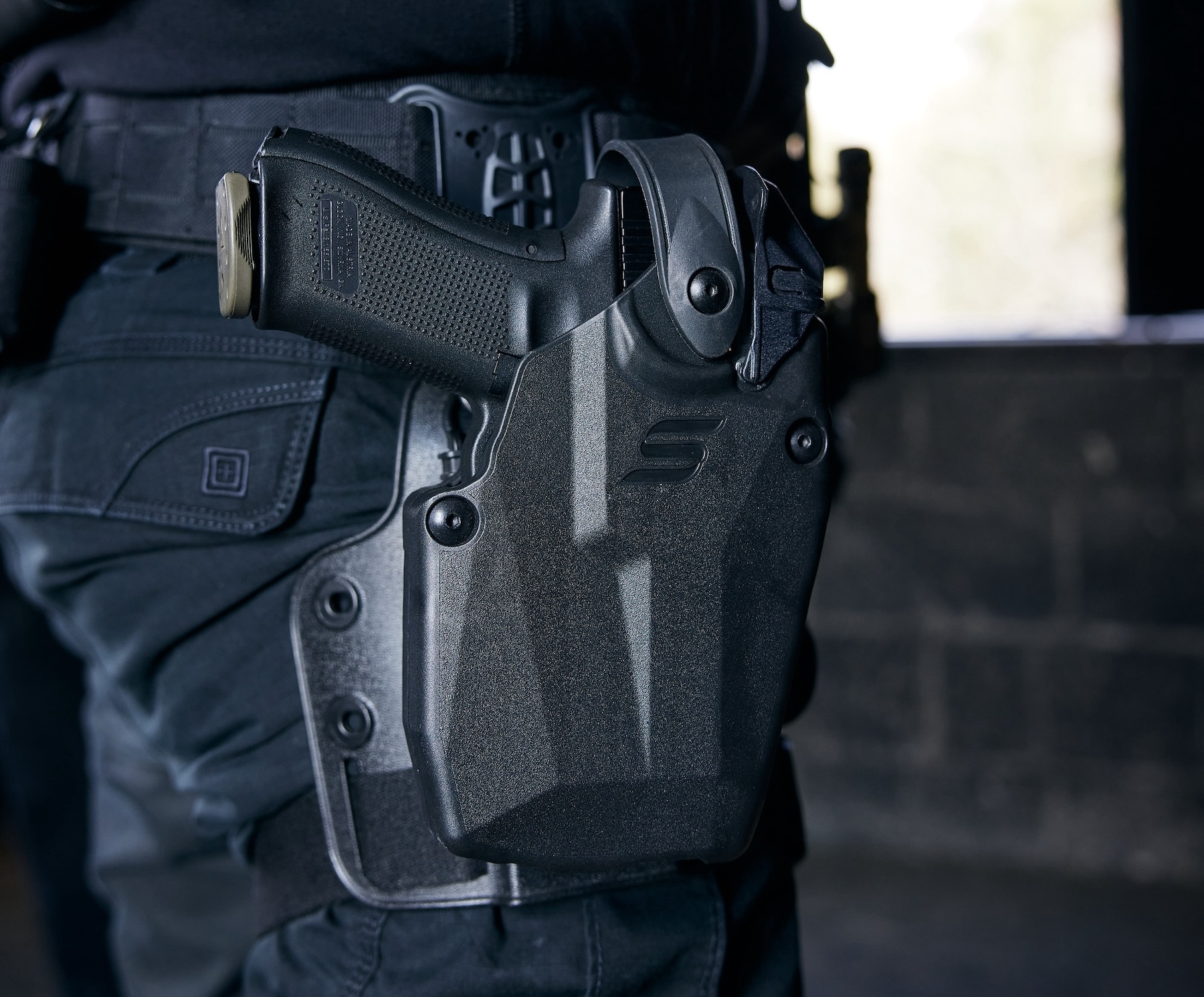
A Vault holster on Safariland’s leg shroud and their Drop Flex Adapter – worn at an appropriate height as well (Photo – Safariland).
Lastly, it would help if you appreciated that a holster’s retention level is balanced by other things, like draw efficiency. Your holster can be so secure that officers can’t draw the gun when they want to. This makes you less safe, not more. Security and access must always be balanced when selecting a duty holster. Too much emphasis on security is just as bad as too little.
Carry On!
A third article will address testing protocols for duty holsters. For now, the most important thing is to do your homework when evaluating holster retention levels.
God bless you all, and be safe out there!



